Mile 51.5
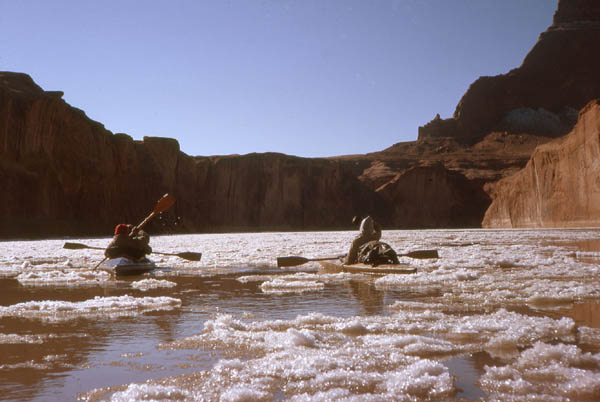

| Mile 51.8 Dec. 1962 Approaching Dove Canyon (left bank). |
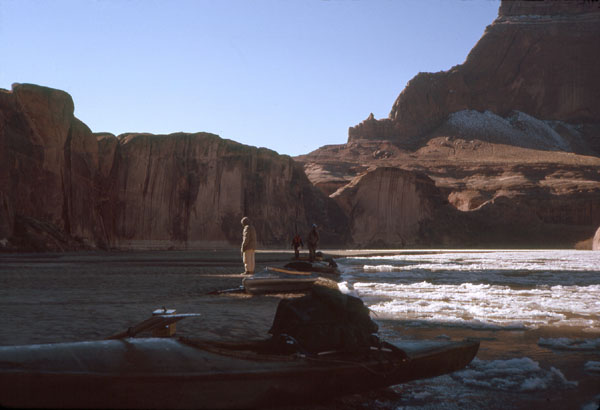
| Dec. 1962 The landing at Dove Canyon is about a mile upstream of West Canyon Creek. That's Gregory Butte looming over West Canyon Creek. |
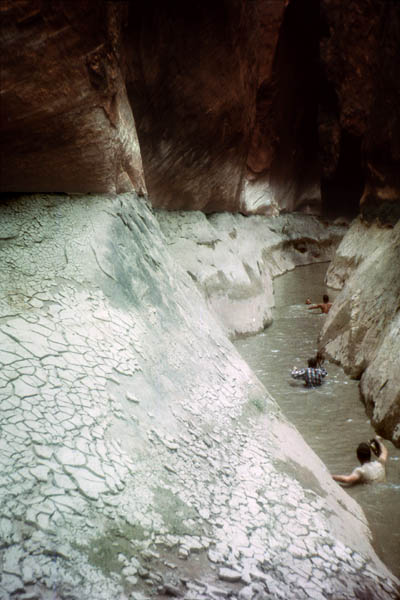
| The exploration of Dove Canyon starts with a long swim. |
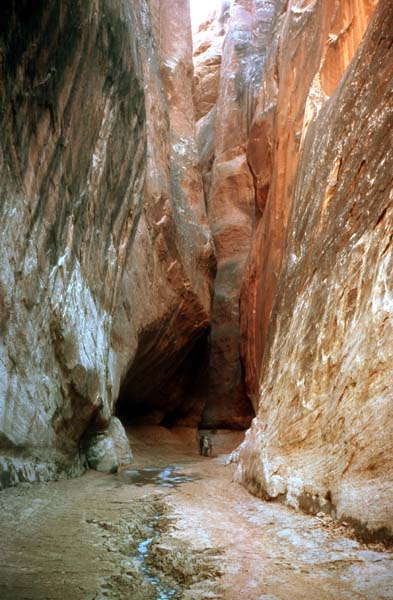
| Dec. 1962 Above the swim, Dove Canyon is easy walking |
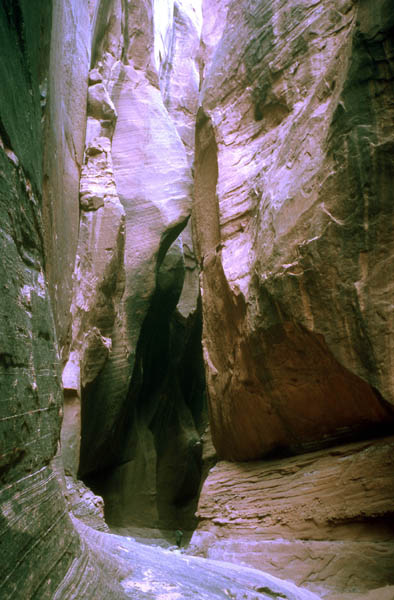
| Dec. 1962 This is one of the finest of the long narrow canyons. As we walk up further and further, the light intensity gets less and less. The camera must be on a tripod for most of the pictures and a rather long exposure -- perhaps as much as three minutes -- is needed. This results in blue pictures, and we came to know these canyons as "the blue canyons." |
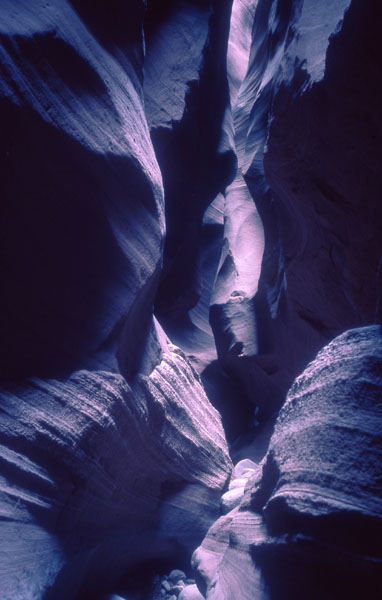
| The predominance of blue is the result of "reciprocity failure" in the emulsions of the film (Kodachrome): as the light gets very dim the responses of the three emulsions in the film no longer follow a simple linear relationship of image density to exposure time. The red and green sensitive layers are most affected by reciprocity failure -- twice the exposure time does not result in half the density of the transparency. The film is relatively "blind" to the red and green ranges of the spectrum. The blue-sensitive layer retains much of the reciprocity relationship, so its response is still pretty good. The blue image remains while the red and green images are largely gone. |